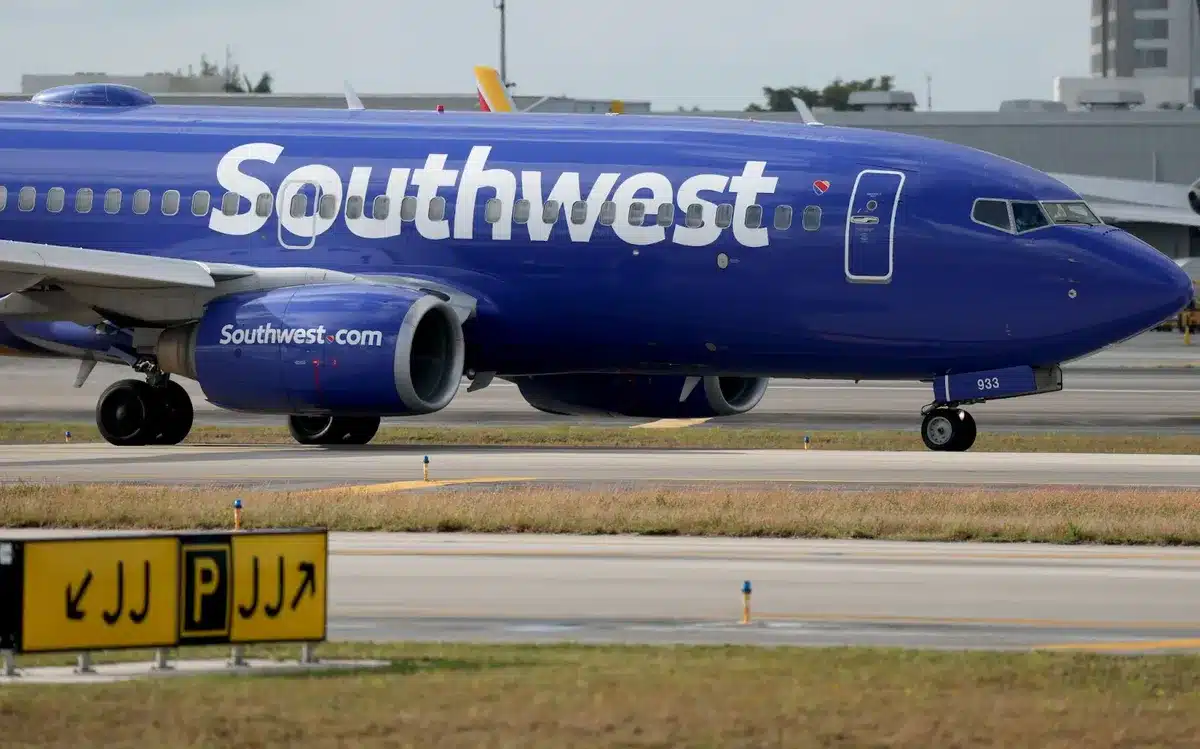
Near Disaster at Chicago Midway Airport
A Southwest Airlines plane and a private jet nearly collided at Chicago Midway Airport (MDW) after a pilot repeatedly failed to follow air traffic control (ATC) instructions. Audio recordings reveal how dangerously close the two planes came to disaster.
Quick Thinking Averts Crisis
The incident occurred on the morning of February 25, 2025, as both aircraft prepared to land. A Southwest Airlines pilot reacted swiftly, preventing catastrophe.
At 8:20 a.m., airport surveillance captured Southwest Flight 2504 approaching the runway. Suddenly, a Flexjet Challenger 350 crossed its path. To avoid a collision, the private jet made a rapid ascent as the Boeing 737-800 flew overhead.
Flight data showed that at one point, only 2,050 feet separated the two planes. The Southwest jet maintained an altitude of about 900 feet above the Flexjet.
What Went Wrong?
ATC audio, obtained from LiveATC.net and shared by Flightradar24, highlighted communication breakdowns.
The Midway ground controller initially gave clear instructions:
“Flexjet 560, turn left on Runway 4 left, cross Runway 31 left, and hold short of Runway 31 center.”
However, the Flexjet pilot misunderstood:
“All right, left on 2… on 4 left, cross the 2-2, 13 center. Flexjet 560.”
The controller immediately corrected the pilot:
“Flexjet 560, negative.”
Despite this, the Flexjet continued on the wrong path.
Southwest Pilot Takes Control
Realizing the imminent danger, the Southwest pilot acted fast:
“Southwest 2504 going around.”
The control tower responded:
“Southwest 2504, Roger, climb, maintain 3000.”
Meanwhile, the ground controller ordered the Flexjet to hold position. The pilot initially failed to comply but eventually acknowledged:
“Cross the hold short, hold short Hotel, Flexjet 560.”
After the dust settled, the Southwest pilot calmly asked:
“Tower, Southwest 2504, how’d that happen?”—a question many are still asking.
FAA and NTSB Launch Investigation
FlightAware confirmed that the Flexjet Challenger was headed to Knoxville, Tennessee, while the Southwest flight had originated from Omaha, Nebraska.
Southwest Airlines later stated that their crew performed a precautionary maneuver to avoid a possible conflict. The airline emphasized that “nothing is more important to Southwest than the safety of our customers and employees.”
Flexjet acknowledged the incident, assuring that they adhere to “the highest safety standards” and are conducting an internal investigation.
The FAA and NTSB have since opened a joint investigation. Transportation Secretary Sean Duffy addressed the matter on X, warning:
“Pilots must follow air traffic control instructions. If they don’t, their licenses will be revoked.”
A Troubling Trend in Aviation Safety
While near-misses remain rare, runway incursions have increased. The FAA recorded 1,574 incidents in 2021. That number has risen to an average of 1,749 per year, sparking concerns over air traffic safety.
The near-disaster at Midway came during a turbulent time for Southwest Airlines. The company recently announced plans to cut over 10% of its corporate staff.
Southwest Airlines’ Workforce Reduction
On February 17, 2025, CEO Bob Jordan announced a major restructuring—the largest in five decades. In a memo titled “Transforming The Way We Work,” he outlined a three-year strategy focused on:
- Increasing revenue and customer loyalty
- Maximizing efficiency while cutting costs
- Optimizing investments
To streamline operations, Southwest will eliminate 1,750 corporate jobs, about 15% of its corporate workforce. Layoffs will begin in late April, primarily affecting leadership and administrative roles.
Despite the cuts, Southwest assured employees that displaced workers will receive salary, benefits, and severance packages during the transition.
Aviation Tragedy Near Reagan National Airport
While Southwest navigates financial challenges, American Airlines recently suffered a devastating loss.
On January 29, 2025, an American Airlines plane and a military helicopter collided mid-air near Reagan National Airport. The crash claimed multiple lives, including that of American Airlines pilot Sam Lilley.
Lilley, 28, was flying a PSA Airlines Bombardier CRJ700 from Wichita, Kansas, when his aircraft struck a Sikorsky H-60 helicopter. Both aircraft plunged into the Potomac River, leaving no survivors.
A Family’s Heartbreak
Timothy Lilley, Sam’s father and a former military pilot, initially refused to believe his son was involved. But as hours passed with no contact, the devastating truth set in.
“This is the worst day of my life,” Timothy wrote on Facebook. “Sam was the First Officer on the flight that crashed in DC last night. It is so devastating to lose someone who was loved so much.”
Sam had discovered his passion for flying in 2019 after earning a marketing degree from Georgia Southern University. He pursued a successful career with PSA Airlines and had been planning to marry his fiancée in the fall.
His grieving father described him as “kind, happy, and full of life”—a man who “lived his Christian faith through kindness to others.”
Aviation Industry Under Pressure
With near-misses, deadly crashes, and corporate upheavals dominating headlines, the aviation industry faces growing scrutiny.
As the FAA and NTSB investigate the Chicago Midway incident, experts are pushing for enhanced pilot training, improved air traffic control systems, and stricter safety enforcement.
One thing is clear: aviation safety has never been more critical.





